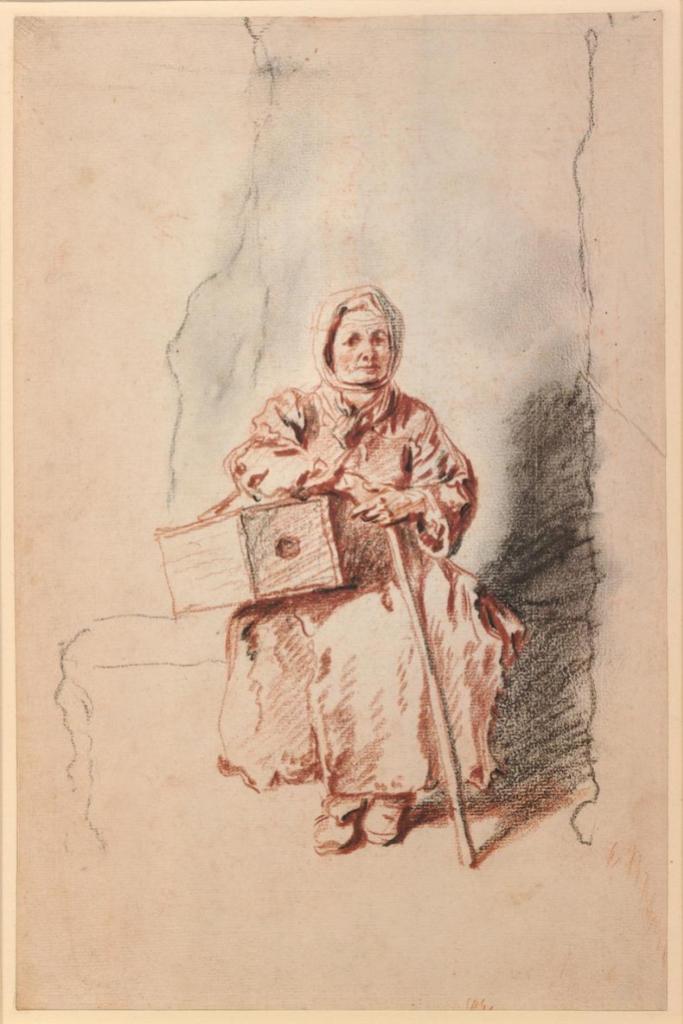From the October 2025 issue of Apollo. Preview and subscribe here.
In mid September, I attended ‘Colour and line: Watteau drawings’ in its final days at the British Museum. It was a happy reminder of the many narratives that are contained within the BM. Any encounter with Watteau (1684–1721) naturally contains ambiguities. On display in the exhibition was a drawing of a Savoyarde (a woman from Savoy) in Paris. At the time the drawing was made she was a poor immigrant, to one independent state from another. Today, the historical Savoy region is split between France and Italy.
It was a reminder that even to state Watteau’s nationality is ambiguous. He is technically a French artist, but his native city, Valenciennes, was part of the Habsburg Netherlands until seven years before his birth. And it is, perhaps, Watteau’s Netherlandish inheritance that makes him so fascinating. The trois crayons technique (using red, black and white chalk) for which he is so renowned has a particularly strong tradition in the Low Countries.
The drawing of the Savoyarde is treated with the same care and attention – the same respect – as the Parisian aristocrats who appear in other drawings. The face of the woman is lined with concern; the dress’s tiring bulk is evident in the thick red chalk, in contrast to the shining silk that the artist evokes elsewhere with the same medium. Watteau is particularly good at capturing the weight of things. Near the drawing of the Savoyarde is a servant carrying a tray balanced on one hand and a carafe in the other, the elegance of the man summed up by the perfectly poised hand beneath the tray.

Elegance is a word that is often used when discussing Watteau, as though it is easier to appreciate the surface of his Fêtes galantes paintings than enter their ambiguous atmosphere. The ambiguity is, of course, present in his drawings too. In a witty curatorial conceit, drawings of standing soldiers and of dancers were placed next to each other. The figure on the right of the sheet with the dancers is holding a crutch that points to the ground. Is he, perhaps beating time for the dance? At first glance it could appear to be a long sword. The leg of the middle soldier might be about to flick into a contredanse. The figures might be mistaken for the same type of subject, soldier to dancer and back again. This is another way of saying that violence and pleasure are never far apart in Watteau’s world.
Looking at Watteau’s drawings is, in some ways, an easy pleasure. But it is probably not everyone’s idea of enjoyment to spend time looking at 18th-century French drawings. That raised another thought while I was at the exhibition. It is no secret that the secretary of state for education – at the time of writing, Bridget Phillipson – has commissioned a review of the curriculum. Many people have seen this as an opportunity to put art back into education. But during a panel at the Art Business Conference in London last month, both Thangam Debbonaire and Tristram Hunt (a current and a former Labour politician, respectively, who have both campaigned for a change to the curriculum) made it clear that they were no longer optimistic about effecting this change. At its best, learning about art is a version of learning to see. To have a generation who can better see the ambiguities inherent in any project and the fragility of weighty matters is something worth supporting.
From the October 2025 issue of Apollo. Preview and subscribe here.
